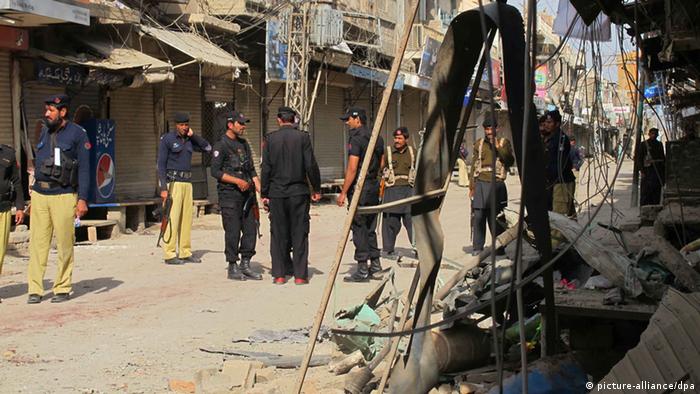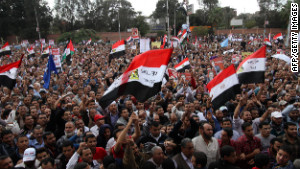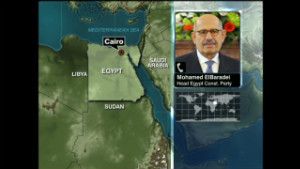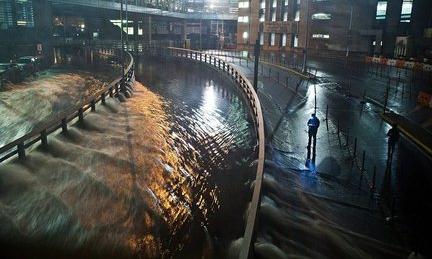Memories of an unsung war
 Indian jawans in a bunker in a forward area in NEFA. The Hindu Photo Archives
Indian jawans in a bunker in a forward area in NEFA. The Hindu Photo Archives
The cremation of the men of the 4th Rajput battalion. The miraculous escape of two men of the HQ 7 Brigade. And a doctor's determination to bring back the wounded. Fifty years after the ill-fated 1962 Indo-China war, here are stories of valour and loss, memories that may soon be lost forever.
Fifty years have passed since the 1962 war and it resides in our collective memory as a debacle. There have been some personal accounts by men who fought, along with analytical accounts of what went wrong by others less emotionally involved. Of all the five wars that India fought, 1962 has always been viewed as the misfortune of an unprepared army in the face of a superior foe. What have been lost are the stories of how men fought with outdated equipment, not geared for the harsh winters, often to die to the last man standing.
Those who witnessed the war or were affected by it are now in the autumn of their lives. With their passing, a whole generation of living history will be gone. However each old timer’s memories of the war remain as distinct as individual fingerprints, outlined with its own patina of adventure and pain. Fifty years since the war, memories have now become anecdotes. In times to come, with the passing of these witnesses, their stories may never find a place even in the periphery of our memories of this unsung war.
Nine days of fire
In October 1962, Sangja Gompu had just turned 17. He lived in the picturesque, windswept Namchi village, close to Tenga in the Kameng Sector in what was then known as the North East Frontier Agency. Blessed with a sturdy muscular body and the rugged looks of the Mompa tribe, he had begun working as a porter for the Indian army. It wasn’t easy carrying 60 to 70 kg up steep mountain slopes to remote forward posts, some as high as 13,000 to 15,000 feet. Now 67, he no longer works as a porter. He has an ample girth and the booming voice of a master storyteller. His voice rises and falls as he relives anecdotes from the past. His most dramatic tale is how, following the ceasefire, he was asked to be a guide to a Major and 26 men and show them the route to the Lagyala Gompa.
Perched on a remote hillside overlooking the village of Morshing, the Gompa is one of the holiest Buddhist shrines in Arunachal Pradesh, older than the famed Tawang Monastery. Sangja led the Major and his men up the steep incline, lush with rhododendron forests and moss-ridden pine trees.
“Above the Gompa, we found a cross nailed on a pine tree,” he says. “It was engraved with a dire message. It said that there were 336 men buried in that spot. To this day I remember this number. I was sent down to Morshing village to get more men to help dig up the mass grave. It was a terrible sight. The Chinese had buried the soldiers with their weapons and ammunition intact. The snow and the cold had preserved the bodies. One body had been wrapped in a blanket. We presumed it was the CO sahib. The major decided to cremate them. A priest was called. Every day we would dig up 50 bodies, lay them out in a row and spread a white sheet over them. A pundit would chant some mantra and sprinkle Ganga jal, followed with ghee and kerosene. The moment the pyre was lit we had to run and hide as the ammunition went off. It took us nine days to cremate the men of the 4th Rajput battalion.”
 T.K. Gupta who escaped the Chinese in the company of Maj. Nijjar. Photo: Madhu Gurung
T.K. Gupta who escaped the Chinese in the company of Maj. Nijjar. Photo: Madhu Gurung
Led by Lt. Col. Brahmanand Awasthi, the men of 4th Rajput had been ambushed by the Chinese when they were withdrawing from Sela to Bomdila. They fought to the last man standing. A black granite plaque that commemorates their valour indicates their date of martyrdom as November 23, 1962.
 Dr. Kamakhya Chakravarty who volunteered to travel to Dirang to bring back prisoners of war. Photo: Madhu Gurung
Dr. Kamakhya Chakravarty who volunteered to travel to Dirang to bring back prisoners of war. Photo: Madhu Gurung
Sangja says those nine days remain etched in his memory. “I felt very sad but was also filled with a deep sense of awe at the courage of these men who did not surrender but fought till the last. It must have been the same admiration for the formidable resistance by their fallen foe that led the Chinese army to bury them.”

Lobsang who helped Indian soldiers escape. Photo: Madhu Gurung
Among those martyred was Lt. Col. Awasthi. His wife, Sushila, bore the bitter loss stoically. She never remarried and brought up her daughter single-handed, saw her marry and start a family of her own. Sushila’s lone wish was that her ashes should be scattered around the memorial at Lagyala, where her husband died fighting. Sushila Awasthi died in 2011. The men of 4th Rajput carried out her wishes, 49 years after her husband was martyred on that isolated hillside.
Flight to freedom
Brig. T.K. Gupta was a Captain in 1962, an Intelligence Officer with Brig. J.P. Dalvi in HQ 7 Brigade. Now 78, he is based in Kolkata and works as the head of security for the Indian Tea Association. He remembers clearly the days of the war. “It was on October 20, 1962, that the Chinese began shelling us in earnest. Before that there had been only a show of muscle and each side was watchful and alert. The brigade headquarter was asked to withdraw to Tsangdhar, so we left; Brig. Dalvi, Maj. Talwar, Maj. Gopal, Maj. Nijjar and myself. That morning there was so much of shelling that, every two minutes, we had to stop and orient ourselves as we withdrew. We travelled non-stop and, by nightfall, came across a cave where we rested. No one had eaten since the previous evening. Maj. Nijjar had a bad knee and could not walk. I developed chilblains. We stayed back to recoup while the rest went ahead,” recalls Brig. Gupta.
The two officers later climbed down towards Gorsam Chorten. The chorten, built on the lines of Swayambunath in Nepal with magnetic eyes painted on all four sides of the sanctum, stood out dramatically in the thick fir forest. Close by flowed the Nyamjang Chu, which the Chinese had crossed when the waters had ebbed. Around them the forest was full of withdrawing Indian troops and ambushing Chinese. Retributions were swift and merciless.
Somehow the two men stumbled upon a shepherd’s hut occupied by a local couple who gave them some smoked yak meat to assuage their hunger. They spent one night sitting on logs under a bridge occupied by the Chinese. Says Brig. Gupta, “We watched the Chinese moving around in our vehicles. They had even rebuilt the Jung bridge across the Tawang Chu, which we had destroyed.” Eventually the two officers crept up to a nearby village. Peering into the Mompa huts, they recognised some men who had come to Tawang to paint their Officers’ Mess. “We walked in, to their amazement. The villagers fed us and hid us in a pigsty, as Chinese patrols were around. At dawn, they got us to shave off our six-day stubble. They gave us traditional Mompa clothes, put six-pronged yak hair caps on our heads and walked us to the edge of the village.”
 A black granite plaque that commemorates the valour of the 4th Rajput battalion at Lageylo Gompa. Photo: Madhu Gurung
A black granite plaque that commemorates the valour of the 4th Rajput battalion at Lageylo Gompa. Photo: Madhu Gurung
There used to be four cane bridges over the Tawang Chu. Two had been destroyed by retreating Indian troops and two remained at Muktu and Kheed. “Carrying baskets like the porters, with straps around our heads, Maj. Nijjar and I moved with a group of Mompa porters from Lau basti. As we were much taller and darker skinned than the porters, they surrounded us from all sides and we made our way across the swaying cane bridge. Once we crossed the bridge, they put us on the road to Tashigaon in Bhutan. We survived because of them.” Brig. Gupta regrets that they never had a chance to thank the men who saved them.
Bringing back the boys
Dr. Kamakhya Chakravarty lives in Tezpur, Assam. At 85, he looks years younger and his home serves as his clinic. Dr. Chakravarty was working in the Tezpur Civil hospital (now known as Kanaklata hospital) when he began hearing rumours of a Chinese invasion. Soon announcements went out over the public address system at the local church, advising people to evacuate the town. “Wherever I went on my cycle, I would see a mass exodus of people congregating at ferry points to leave Tezpur.” Many of his friends and family left but he decided against it. “I wasn’t going anywhere, Chinese or no Chinese.” By November 18, Tezpur was a ghost town.
Then unilateral ceasefire was declared. “A month later the Indian Red Cross Society came to our hospital to scout for volunteer doctors to travel to Dirang in Arunachal Pradesh to get back wounded soldiers who were prisoners of war. I volunteered. I thought it was adventurous.”
Led by Col. Ahluwalia, three doctors set out for Dirang where the Chinese had set up a POW camp. He recalls, “Early on December 18, we were taken to Misamari, given breakfast and driven to Tenga and then to Bomdila. We reached there in the afternoon. We had early dinner but none of us could sleep, as the high altitude gave us a headache. The next morning we reached Dirang. There were three Chinese doctors, including a lady, waiting for us. Col. Aluwalia said, “Ab sab le ley puttar (Take them all now, son),” and we started taking over our soldiers. It took us three hours to go over the details and paper work to take over 460 soldiers. About 10 were on intravenous drips; most were frostbite cases, others had bullet injuries. They also gave us the bodies of soldiers they had treated but who didn’t survive. We loaded the sick and the wounded into trucks, making the serious cases comfortable with painkillers and assurances that they would be okay. I promised myself that I would ensure that each soldier we took back survived.”
The convoy of over 100 trucks left at night. “At a camp in Bomdila we were given some food but, by the time the last truck moved, the food was over. It didn’t bother us; we were more concerned that everyone stays alive. The convoy travelled all night. While we were negotiating a treacherous bend, I heard someone call out from the road. We stopped. A faint torch showed some soldiers standing by the roadside in the bitter cold. We thought they wanted a lift but they stood there with food packets. It was puri and sabzi. The puris were cold and hard but they were so welcome. Only the Army can do such a thing. The message had gone out that we had not eaten and these boys had been waiting for us.” The convoy reached Tezpur military hospital at three in the morning. “All 460 soldiers were brought in alive. It was a big relief for us.”
When the Chinese came
Dorje Tsering was 15 when the war started. Today he runs Guru Padmasambhava Memorial School in Bomdila. “When the war started we were living the farmhouse near Singarthung. Lots of Chinese died there during cross fire between the Chinese and Indian troops. The Chinese army never left their dead. The soldiers who died near our village were buried in the field and after two days the Chinese came again and dug them up, put them in trucks and took them home. The Chinese came to our village and distributed posters of Mao Tse Tung. They came with entertainment troupes and would hold feasts for the whole village. They said, ‘Look at us we are all alike, our blood is the same. It is the Hindus who are different.’ They helped the villagers in harvesting and fixing their houses damaged during shelling. But the villagers were afraid of them, they all knew what had happened in Tibet when families had been separated forever and sons taken away to labour camps.
My mother sent me to fetch water from the stream near the forest by our house and as I was returning I heard someone call out ‘Oye Lama,’ I knew it was some Indian soldier as they called all Mompas Lama. I saw a soldier emerge from the bushes and he told me that he had not eaten for nearly 10-12 days. I took him home and gave him our traditional food, he tried but he could not eat too much. He gave me Rs.10 and left.
Saving a soldier
Lobsang was 13 during the war. His mother sent him to fetch water from the stream in the forest. When coming, he heard someone calling out. It was an Indian soldier hidden behind bushes, his feet oozing blood, as if someone had knifed his soles. “I gave him water and ran home to tell my mother. She and my uncle came back with me. Between them they dragged him to a small hut used as a lookout to watch over the crop and hid him there. Mother said that we should not tell anyone, not even our neighbours, as they may report to the Chinese. We kept him hidden for nine days. My uncle knew about traditional medicine; so he would put a balm of tithe patta and haldi on his foot every day. Slowly he could walk with the help of a bamboo stick. On the ninth day he was ready to leave so uncle gave him our traditional gadamchola, (a long woollen jacket) and helped him to the end of the stream. I do not know what happened to him but we all hoped he survived.”
battalion, 1962 Indo-China war, Indian war heroes, war memories, unsung wars
 سنہ انیس سو باسٹھ میں چین کے ساتھ جنگ میں بھارت کو شکست ہوئی تھی
سنہ انیس سو باسٹھ میں چین کے ساتھ جنگ میں بھارت کو شکست ہوئی تھی
کوئی بھی شخص جو میری طرح ہمالیہ کی بلندیوں میں چین کے ساتھ عارضی لیکن تلخ سرحدی جنگ کا گواہ ہے، وہ نصف صدی کے بعد بھی وہ صدمہ بھولا نہیں ہے جس میں بھارتی فوج کی شکست ہوئی تھی اور سیاسی طور پر ناکامی بھی۔
اس جنگ کی تاریخ کو اتنی باریکی سے لکھا گیا ہے کہ اس زمین پر دوبارہ چلنے کی ضرورت نہیں کیونکہ اس پر بہت اچھی طرح سے کام کیا جا چکا ہے
یہ کہنا کافی ہوگا جیسا جواہر لال نہرو کے سرکاری سوانح عمری لکھنے والے ایس گوپال نے لکھا تھا ’چیزیں اتنی بری طرح غلط ہوئیں کہ اگر ایسا واقعی میں نہیں ہوتا، تو ان پر یقین کرنا مشکل ہوجاتا۔‘
لیکن ایسا ہوا کہ بھارت کے اس وقت کے صدر ایس رادھاكرشن نے اپنی حکومت پر آسانی سے یقین کرنے اور نظر انداز کرنے کا الزام لگا دیا۔
جواہر لال نہرو نے بھی خود پارلیمنٹ میں کہا تھا ’ہم جدید دنیا کی حقیقت سے رابطہ بھول گئے تھے اور ہم ایک مصنوعی ماحول میں رہ رہے تھے جسے ہم نے ہی تیار کیا تھا۔‘
اس طرح انہوں نے اس بات کو تقریباً قبول کر لیا تھا کہ انہوں نے یہ یقین کرنے میں بڑی غلطی کی کہ چین سرحد پر جھڑپوں، گشتی پارٹی کی سطح پر تصادم اور تو تو میں میں سے زیادہ کچھ نہیں کرے گا۔
اگرچہ چین کے ساتھ جاری تنازعہ نومبر 1959 کے ابتداء میں اس وقت پرتشدد ہو گیا تھا جب لداخ کے كوگكالا میں پہلی بار چین نے خون بہایا تھا۔
اس کے بعد یہ واقعہ ہر اس غلطی کی جڑ بن گیا جو اس کے بعد سرزد ہوئی۔ اس کے لیے ہمارے معزز وزیر اعظم کو ذمہ دار ٹھہرایا جانا چاہیے۔
لیکن ان کے مشیر، افسر اور فوج بھی اس معاملے میں برابر کے مجرم ہیں کیونکہ ان میں سے کسی نے بھی ان سے اکیلے میں بھی اس پر بحث نہیں کی کہ وہ غلطی پر تھے۔
ان کا یہ بہانہ ایک عام اصول تھا کہ ’ نہرو سب سے بہتر جانتے تھے‘۔ چین کے ساتھ تنازع کے بعد فوج کے سربراہ بنے جنرل ’مچچھو‘ چودھری کا خیال تھا ’ہم نے یہ سوچا تھا کہ ہم چینی شطرنج کھیل رہے ہیں، لیکن وہ روسی رولیٹ نکلا۔‘
جن لوگوں کو ذمہ دار ٹھہرایا جانا چاہیے، ان کی فہرست کافی طویل ہے۔ لیکن اوپر جو دو نام ہونے چاہیئں، ان میں پہلے ہیں کرشنا مینن جو 1957 سے ہی ملک کے وزیر دفاع تھے۔

بھارتی فوج چین کے منصوبوں کا پتہ کرنے میں ناکام رہی
دوسرا نام لیفٹیننٹ جنرل بی ایم کول کا ہے جن پر کرشنا مینن کی خاص نظرِ کرم تھی۔ لیفٹیننٹ جنرل کول کو شمال مشرقی علاقے کا کمانڈر بنایا گیا تھا۔ اس علاقے کو اب اروناچل پردیش کہا جاتا ہے۔
کول پہلے درجے کے فوجی نوکر شاہ تھے۔ ساتھ ہی وہ غضب کے جوش کے باعث بھی مشہور تھے۔ لیکن انہیں جنگ کا کوئی تجربہ نہیں تھا۔
ایسی تباہ کن تقرری کرشنا مینن کی وجہ سے ممکن ہوئی کیونکہ وزیر اعظم سے قربت کے باعث مسٹر مینن جو بھی چاہتے تھے، وہ کرنے کے لیے آزاد تھے۔
مینن ایک ذہین لیکن چڑچڑی شخصیت کے مالک تھے۔ انہیں فوج کے سربراہان کو ان کے جونيئرز کے سامنے بے عزتی کرنے میں مزا آتا تھا۔ وہ فوجی تقرریوں اور پروموشنز میں اپنے چہیتوں پر کافی مہربان رہتے تھے۔
یقینی طور پر انہیں وجوہات کے سبب ایک اڑيل وزیر اور مشہور جنرل كے ایس تھمیا کے درمیان بڑی بحث ہوئی۔ معاملے نے اتنا طول پکڑا کہ مینن نے استعفیٰ دے دیا، لیکن انہیں اپنا استعفی واپس لینے کے لیے منا لیا گیا۔
لیکن اس کے بعد فوج اصلی شکل میں مینن کی نوکرانی بن گئی۔
ہمالیہ پر کول شدید طور پر بیمار پڑگئے اور انہیں دلی واپس لایا گیا لیکن مینن نے حکم دیا کہ وہ اپنا کمانڈ برقرار رکھیں گے اور دلی ہی سے وہ جنگ کی کمانڈ سنبھالیں گے۔
فوج کے سربراہ جنرل پی این تھاپر اس نظریہ کے مکمل طور پر خلاف تھے، لیکن وہ مینن سے ٹکراؤ نہیں لینا چاہتے تھے۔ یہ جانتے ہوئے بھی کہ جرنل کول واضح طور پر بہت سے معاملات میں غلط تھے، جنرل تھاپر ان کے فیصلے کو تبدیل کرنے کے لیے بھی تیار نہیں تھے۔

چین کی فوج نے بھارت کے کئی علاقوں پر قبضہ کر لیا تھا
ان حالات میں حیرانی کی کوئی بات نہیں کہ نہرو کے 19 نومبر کو امریکی صدر کینیڈی کو لکھے ان کے قابل رحم خطوط سے کافی پہلے ہی کرشنا مینن اور کول پورے ملک میں قابل نفرت شخصیت بن چکے تھے۔
اس کا نتیجہ بلکل واضح تھا۔ کانگریس پارٹی کے بیشتر لوگ اور پارلیمنٹ نے اپنا زیادہ وقت اور توانائی حملہ آوروں کو بھگانے کے بجائے مینن کو وزارت دفاع سے ہٹانے میں صرف کیا۔
نہرو پر بھی کافی دباؤ پڑا اور بالآخر انہوں نے مینن کو سات نومبر کو برخواست کر دیا اور کول کے معاملے میں تو صدر رادھاكرشن نے جیسے سب کچھ کہہ دیا ہو۔
19 نومبر کو دلی آئے امریکی سينٹرز کے ایک وفد نے بھارتی صدر سے ملاقات کی۔ ان میں سے ایک نے یہ پوچھا کہ کیا جنرل کول کو قیدی بنا لیا گیا ہے؟ اس پر صدر رادھاكرشن کا جواب تھا ’بدقسمتی سے یہ سچ نہیں ہے‘۔
قومی سلامتی پر فیصلہ کرنا اتنا غیر منظم تھا کہ مینن اور کول کے علاوہ صرف تین لوگ سیکرٹری خارجہ ایم جے دیسائی، خفیہ سروسز کے سربراہ بي این ملک اور وزارت دفاع کے طاقتور جوائنٹ سیکریٹری ایچ سی سرین کی ہی پالیسی سازی میں چلتی تھی۔
ان میں سے سبھی کرشنا مینن کے معاون تھے۔ بی این ملک کا کردار بڑا تھا اور زیادہ وقت بدنام کرنے میں لگے رہتے تھے۔ ملک پالیسیاں بنانے میں افراتفری پھیلاتے تھے، جو ایک خفیہ چیف کا کام نہیں تھا۔
’بدقسمتی سے یہ سچ نہیں ہے‘
نہرو پر بھی کافی دباؤ پڑا اور بالآخر انہوں نے مینن کو سات نومبر کو برخواست کر دیا اور کول کے معاملے میں تو صدر رادھاكرشن نے جیسے سب کچھ کہہ دیا ہو۔
19 نومبر کو دلی آئے امریکی سينٹرز کے ایک وفد نے بھارتی صدر سے ملاقات کی۔ ان میں سے ایک نے یہ پوچھا کہ کیا جنرل کول کو قیدی بنا لیا گیا ہے؟ اس پر صدر رادھاكرشن کا جواب تھا ’بدقسمتی سے یہ سچ نہیں ہے‘۔
اگر مسٹر ملک اپنے کام پر توجہ دیتے اور یہ پتہ لگاتے کہ چین اصل میں کیا کر رہا ہے، تو ہم اس شرمناک اور ہتک آمیز صورتحال سے بچ سکتے تھے۔
لیکن اس کے لیے یہ پتہ کرنا ہوتا ہے کہ ایک طرف جب ہم پوری طرح اس بات سے مطمئن تھے کہ کوئی بھی بڑی چیز نہیں ہوگی، چینی ہنما ماؤ، ان کے اعلی فوجی افسر اور سیاسی مشیر بڑی چالاکی سے اس منصوبہ بندی میں مصروف تھے کہ کس طرح بھارت کے خلاف محتاط رہ کر حملہ کیا جائے، جو انہوں نے کیا بھی۔
نہرو نے یہ سوچا کہ بھارت اور چین کی جنگ میں چین اور سوویت کے درمیان پھوٹ ایک اہم بات ہوگي اور یہ چین کے لیے خوف کی ایک بڑی وجہ ہوگي۔
لیکن ہم یہ نہیں جانتے تھے کہ کیوبا کے میزائل بحران کی معلومات کا بھر پور استعمال کرتے ہوئے نہرو کو سبق سکھانے کا ماؤ کا پیغام نكتا كھرشچیو کے لیے بھی تھا اور اس وجہ سے سوویت لیڈر نے احتیاط برتا۔
بھارت کو اس میزائل کے بحران کے بارے میں کوئی معلومات نہیں تھیں۔ 25 اکتوبر کو روسی اخبار پراودا نے بھارت کو كپكپا دیا۔ اس اخبار نے ’ہمارے چینی بھائی اور ہندوستانی دوست‘ کی بات کی۔
پراودا نے یہ بھی مشورہ دیا کہ بھارت کو عملی طور پر چین کی شرائط پر چین سے بات کرنی چاہئے۔ یہ الگ بات ہے کہ کیوبا کے بحران کا حل قریب آتے ہی روس اپنی پرانی پالیسی پر آ گیا۔
لیکن ماؤ نے حملے کا وقت اسی حساب سے ہی طے کیا تھا۔ آخر میں ماؤ نے بھارت میں وہ حاصل کر لیا، جو وہ چاہتے تھے۔ وہ كھرشچیو پر كریبین میں بزدلی اور ہمالیہ میں غداری کے لیے طعنہ زنی بھی کر سکتے تھے






 غزہ اور اسرائیل کے درمیان جنگ میں سرحد کے دونوں جانب
شہریوں کی ہلاکت انتہائی افسوس ناک بات ہے بطور خاص جب ہلاک ہونے والوں میں
معصوم بچے بھی شامل ہوں۔
غزہ اور اسرائیل کے درمیان جنگ میں سرحد کے دونوں جانب
شہریوں کی ہلاکت انتہائی افسوس ناک بات ہے بطور خاص جب ہلاک ہونے والوں میں
معصوم بچے بھی شامل ہوں۔

 علاقے میں
واقع ہے۔
علاقے میں
واقع ہے۔
























